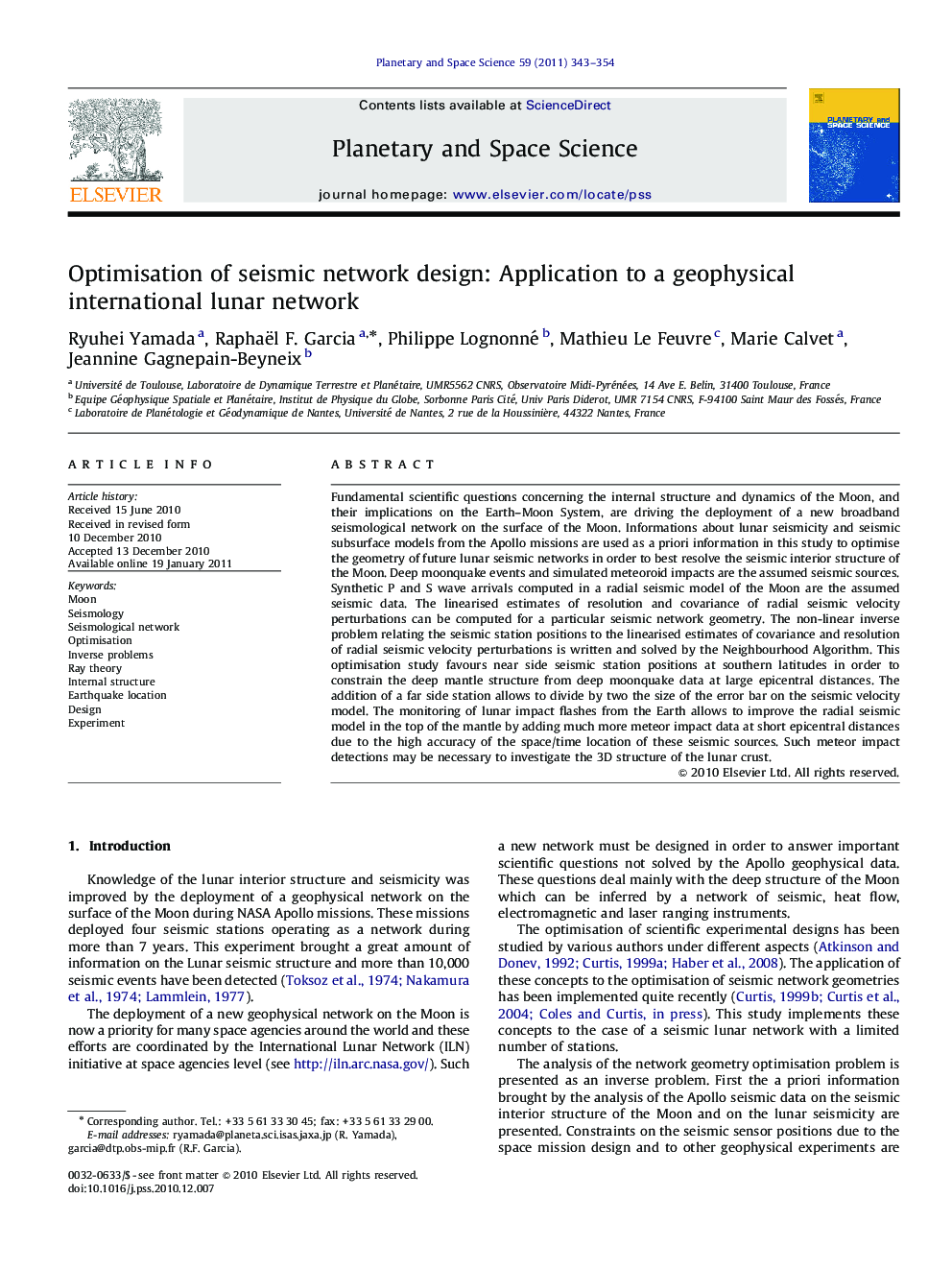| کد مقاله | کد نشریه | سال انتشار | مقاله انگلیسی | نسخه تمام متن |
|---|---|---|---|---|
| 1781838 | 1022305 | 2011 | 12 صفحه PDF | دانلود رایگان |

Fundamental scientific questions concerning the internal structure and dynamics of the Moon, and their implications on the Earth–Moon System, are driving the deployment of a new broadband seismological network on the surface of the Moon. Informations about lunar seismicity and seismic subsurface models from the Apollo missions are used as a priori information in this study to optimise the geometry of future lunar seismic networks in order to best resolve the seismic interior structure of the Moon. Deep moonquake events and simulated meteoroid impacts are the assumed seismic sources. Synthetic P and S wave arrivals computed in a radial seismic model of the Moon are the assumed seismic data. The linearised estimates of resolution and covariance of radial seismic velocity perturbations can be computed for a particular seismic network geometry. The non-linear inverse problem relating the seismic station positions to the linearised estimates of covariance and resolution of radial seismic velocity perturbations is written and solved by the Neighbourhood Algorithm. This optimisation study favours near side seismic station positions at southern latitudes in order to constrain the deep mantle structure from deep moonquake data at large epicentral distances. The addition of a far side station allows to divide by two the size of the error bar on the seismic velocity model. The monitoring of lunar impact flashes from the Earth allows to improve the radial seismic model in the top of the mantle by adding much more meteor impact data at short epicentral distances due to the high accuracy of the space/time location of these seismic sources. Such meteor impact detections may be necessary to investigate the 3D structure of the lunar crust.
Research highlights
► Optimisation of the seismic network geometry improves the seismic model.
► Optimum seismic station positions are favoured in South/West of the near side.
► Adding a far side seismic station divides by two the uncertainties of the model.
► Locating lunar impact flashes from the Earth improves a lot the seismic model.
► The crust and upper mantle are properly determined by using impact flashes.
Journal: Planetary and Space Science - Volume 59, Issue 4, March 2011, Pages 343–354